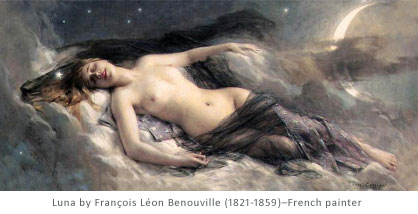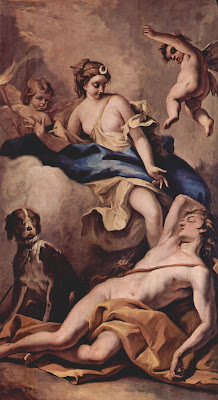Charles Dickens
An influential English author and critic from the Victorian period.Profile
- Full Name: Charles John Huffam Dickens
- Pseudonym: Boz
- Date of Birth: 7 February 1812
- Place of Birth: Landport, Portsmouth, England
- Baptism: 4 March 1812, Portsmouth, England
- Zodiac Sign: Pieces
- Nationality: British
- Death: 9 June 1870
- Place of Death: Higham, Kent, England
- Cause of Death: Stroke
- Place of Burial: Westminster Abbey, London
- Father: John Dickens (1785–1851)
- Mother: Elizabeth Dickens (née Barrow; 1789–1863)
- Siblings: 7 Nos.
- Sister: Frances Dickens (1810-1848)
- Brother: Alfred Dickens (1814)
- Sister: Laetitia Mary Dickens (1816-1874)
- Sister: Harriet Dickens (1819)
- Brother: Frederick William Dickens (1820-1868)
- Brother: Alfred Lamert Dickens (1822-1860)
- Brother: Augustus Newnham "Moses" Dickens (1827-1868)
- Marriage: 2 April 1836 at St. Luke's Catholic Church
- Spouse: Catherine Thomson Hogarth (1816–1879)
- No of Children: 10 Nos.
- Son: Charles Culliford Boz Dickens (1837-1896)
- Daughter: Mary Dickens (1838-1896)
- Daughter: Kate Macready Dickens (1839-1929)
- Son: Walter Landor Dickens (1841-1863)
- Son: Francis Jeffrey Dickens (1844-1886)
- Son: Alfred Tennyson Dickens (1845-1912)
- Son: Sydney Smith Haldimand Dickens (1847-1872)
- Son: Henry Fielding Dickens (1849-1933)
- Daughter: Dora Annie Dickens (1850-1851)
- Son: Edward Bulwer Lytton Dickens (1852-1902)
- Known for: creating complex plots and a wide varieties of striking characters that captured an all-encompassing picture of the Victorian English society.
- Criticized for: harboring racist views.
- Influences: William Shakespeare (1564–1616), Miguel de Cervantes (1547—1616), Honoré de Balzac (1799—1850), Washington Irving (1783—1859), Henry Fielding (1707—1754), Laurence Sterne (1713—1768), Jane Austen (1775—1817), Victor Hugo (1802—1885), Sheridan Le Fanu (1814—1873).
- Influenced: Karl Marx (1818—1883), Fyodor Dostoevsky (1821-1881), George Orwell (1903—1950), Mark Twain (1835—1910), Anne Rice (1941—), John Irving (1942—), and George R. R. Martin (1948—).
Quotes
"Suffering has been stronger than all other teaching, and has taught me to understand what your heart used to be. I have been bent and broken, but - I hope - into a better shape." Charles Dickens, Great Expectations
Major Themes
- Victorian society
- Class Distinction
- Poverty
- Crime and Punishment
- Free Will
- Suffering
- Identity
- The Abuse of Power
- Family
- Christian Values
- Morals and Ethics
- Politics
Notable Works:
- Curiosity Shop
- Oliver Twist
- Nicholas Nickleby
- Barnaby Rudge
- A Christmas Carol
- Martin Chuzzlewit
- A Tale of Two Cities
- David Copperfield
- Great Expectations
- Bleak House
- Little Dorrit
- Hard Times
- Our Mutual Friend
- The Pickwick Papers
Did You Know?
- Dickens is one of the voluminous writers of the Victorian era.
- Although his father John Dickens held a respectable position of a clerk in the British Navy, he had little social status.
- Dickens concealed the background of his paternal grandparents since they were servants.
- Dickens was the second of eight children of his parents.
- Dickens grew up in adverse poverty since his father was always entangled in debt.
- His father, John Dickens was put into the debtors’ prison in 1824.
- During his father's imprisonment, Dickens couldn't attend school since he was sent to work in Warren’s Blacking Warehouse, a shoe-polish factory.
- Even thought the shameful incident of his father's imprisonment and his working experience in the shoe-polish factory shaped his writing, Dickens could not confide these even to his wife.
- His first love was Maria Beadnall, but the relationship could not progress since her banker father disliked Dickens.
- On 2 April 1836, at the age of 24, Dickens married Catherine Thomson Hogarth, the daughter of George Hogarth, the editor of the Evening.
- The couple was blessed with the first child, Charley in January 1837.
- His marriage to Catherin was largely unsuccessful.
- When he was 45 years old, Dickens fell deeply in love with the 18-year-old Ellen Ternan and decided to divorce his wife Catherine.
- Majority of his novels published in monthly or weekly instalments.
- The Pickwick Papers was Charles Dickens’s first novel.
- Dickens is credited for establishing the method of publishing novels in serial installments in monthly magazines.
- Dickens reached the pinnacle of his success with the 1836 serial publication of The Pickwick Papers.
- Dickens became a full-time novelist after the success of his The Pickwick Papers.
- His novels are still printed today because of their enduring popularity.
- Although he had little formal education, Dickens became an exceptionally successful writer.
- His last work Mystery of Edwin Drood was unfinished since he died of a stroke in 1870.
References
“Charles Dickens.” Wikipedia.com. 2015. Wikimedia Foundation, Inc. 11 November 2015
< https://en.wikipedia.org/wiki/Charles_Dickens >.












